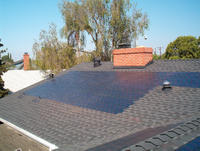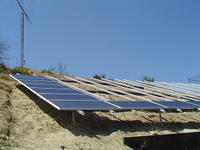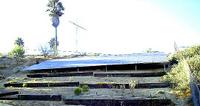Uni-Solar shingles on HGTV Oct. 12
Last Saturday 40 individuals and families visited Uni-Solar's residential solar s
 hingle installation during the annual San Diego Solar Homes Tour. Most people were pleased with how well the solar shingle array blended with the standard composite shingles around it. Twelve visitors requested estimates for their homes. The installation is the same one featured in this blog on July 16, "Powered by Uni-Solar Shingles." Check it out if you haven't already...
hingle installation during the annual San Diego Solar Homes Tour. Most people were pleased with how well the solar shingle array blended with the standard composite shingles around it. Twelve visitors requested estimates for their homes. The installation is the same one featured in this blog on July 16, "Powered by Uni-Solar Shingles." Check it out if you haven't already...Solar energy research and consulting company Solarbuzz Inc. says the world saw 927 megawatts worth of new photovoltaic systems installed in 2004. That level marks a 62 percent increase over what came on line in 2003. The world's leaders in new system installations are Germany and Japan. But in 2004, the number of new photovoltaic system installations in the U.S. grew by 27 percent, compared to a 17 percent growth rate in 2003. (From New Mexico Business Weekly, Oct. 2, 2005)
Stock in Energy Conversion Devices (NASDAQ: ENER), parent company of Uni-Solar, grew by 34.7% for the month ending September 26. Besides Uni-Solar, ECD makes nickel metal hydride batteries for hybrid cars and is active in hydrogen cell research and development. ECD's growth was the highest of any alternative energy stock for the month and the current 52-week range is $13.25-$46.88. It would appear alternative energy stocks have arrived and are here to stay.







